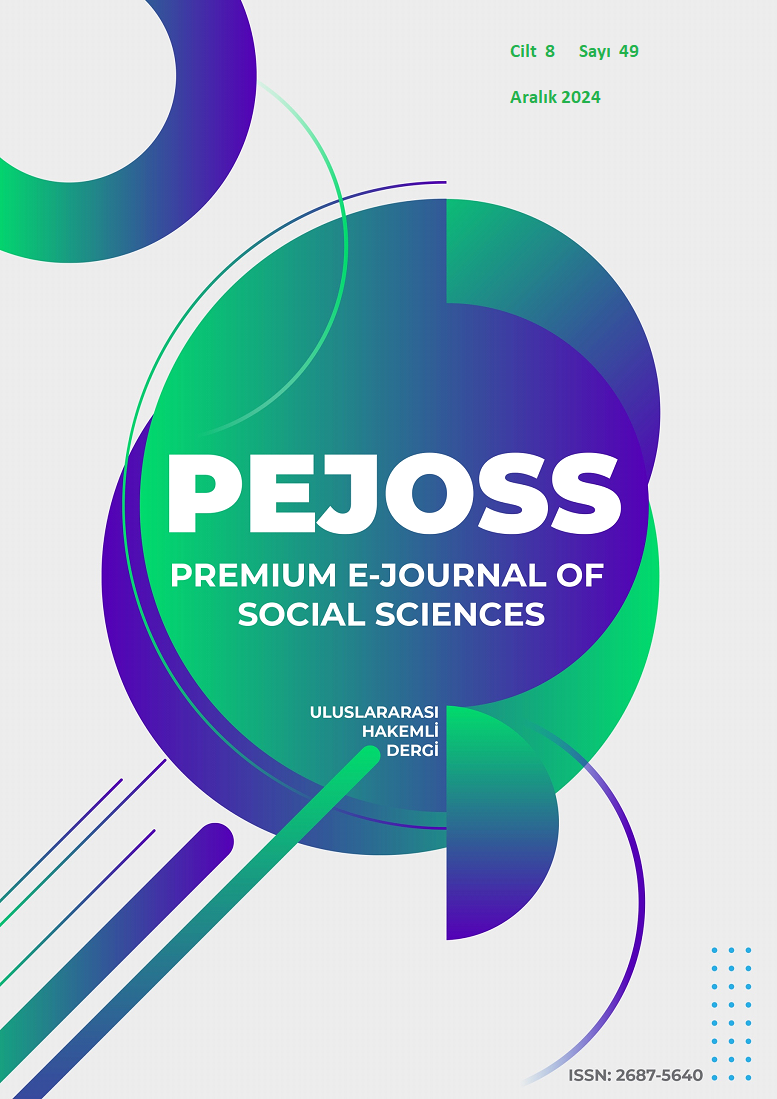A Musical and Psychological Approach to the Opera Salome by Strauss
DOI:
https://doi.org/10.5281/zenodo.14580318Keywords:
Strauss, Salome, opera, music, psychologyAbstract
Strauss is a composer of the late Romantic era, which is not so long ago and consists of the years from mid-1800’s to the early 1900’s. He retold the story of Salome written by Wilde, shocking the opera audience from its first appearance. The opera consists of the Christian biblical theme and is a murderous and erotic version of it. It questions the traditional cultural values of its day in a modern way through innovative use of music and reinterpretation. While composing his operas, Strauss took the splendor of the epics of Wagner and combined it with the emotions of the short Italian verismo opera style. In this study, the opera Salome is analyzed through a musical and psychological approach. According to research and analysis, it is seen that Salome’s music includes leitmotifs, short melodies with symbolic and rich meanings. They are associated with characters such as Salome and John the Baptist. The usage of leitmotifs by Strauss is complex with both uncertainty and symbolism. Besides leitmotifs, the opera’s music includes many symbolic uses of musical color. Moreover, Salome’s harmony uses polytonality, chromaticism, unusual modulations, and ambiguous tones. Some of the major characters and major psychological themes have keys associated with them. With a psychological approach, it is pointed out that Salome is a wicked and greedy adolescent who wants to get whatever she wants immediately. She has obsessive-compulsive disorder tendency as well as being a “femme fatale”. Her family background is also very immoral and unhealthy; his uncle killing her father and marrying her mother. All these negative issues contribute to her rotten personality.
Downloads
References
Ayrey, C. (1989). Salome's final monologue. Derrick Puffett (Ed.), Richard Strauss: Salome (123-130). Cambridge.
Banks, P. (1988). Richard Strauss and the Unveiling of Salome. Nicholas John (Ed.), Salome/Elektra. Riverrun.
Bentley, T. (2005). Sisters of Salome. University of Nebraska Press. ISBN 0-8032-6241-8
Bourne, J. (2008). Salome, A dictionary of opera characters. Oxford University Press.
Carpenter, T. (1989). Tonal and dramatic structure. Derrick Puffett (Ed.), Richard Strauss: Salome (92-93). Cambridge.
Coulardeau, J. (2010). Salome, an obsessive-compulsive myth, from Oscar Wilde to Richard Strauss. Cahiers victoriens et édouardiens, 72, 131-146.
Dierkes-Thrun, P. (2008). The brutal music and the delicate text? The aesthetic relationship between Wilde’s and Strauss’s Salome Reconsidered. Modern Language Quarterly, 69(3), 376.
Haag, H., Sölle, D., Kircheberger, J. H., Müller, A. M. S., & Bührer, E. (1994). Herodias and Salome. Emil Bührer (Ed.), Great Women of the Bible in art and literature. Eerdmans, Grand Rapids.
Kennedy, M. (2001). The New Penguin Opera Guide. Amanda Holden (Ed.). Penguin Putnam. ISBN 0-14-029312-4.
Malik, S. (2008). She freed and floated on the air: Salome and her dance of the seven veils. Jennifer Heath (Ed.), The Veil: Women writers on its history, lore, and politics (134-153). University of California Press. ISBN 978-0-520-25040-6
Newman, E. (1959). Salome, in Great Operas. Vintage.
Puffett, D. (1989). Salome as music drama. Derrick Puffett (Ed.), Richard Strauss: Salome (58-87). Cambridge.
Pugh, E. (n.d.). Salome. https://campuspress.yale.edu/modernismlab/salome/#:~:text=Salome%20by%20Richard%20Strauss%20is,father%20in%20this%20tragic%20opera.
Rosenberg, J. (2017). LA opera’s Salome at the Dorothy Chandler Pavilion. https://irom.wordpress.com/2017/03/04/la-operas-salome-at-the-dorothy-chandler-pavilion/
Ross, A. (2019). The endless, grisly fascination of Richard Strauss’s Salome. https://www.newyorker.com/culture/cultural-comment/the-endless-grisly-fascination-of-richard-strauss-salome
Scott, D. B. (2003). From the erotic to the demonic: On critical musicology. Oxford University Press. ISBN 0-19-515196-8
Skaggs, C. T. (2002). Modernity’s revision of the dancing daughter: The Salome narrative of Wilde and Strauss. College Literature, 29(3), 124–139. http://www.jstor.org/stable/25112661
The Metropolitan Opera. (2024). Salome. https://www.metopera.org/season/2024-25-season/salome/
Wikipedia. (2024). Salome (opera). https://en.wikipedia.org/wiki/Salome_(opera)#cite_note-Holden-4
Downloads
Published
How to Cite
Issue
Section
License
Copyright (c) 2024 Premium e-Journal of Social Science (PEJOSS)

This work is licensed under a Creative Commons Attribution 4.0 International License.


